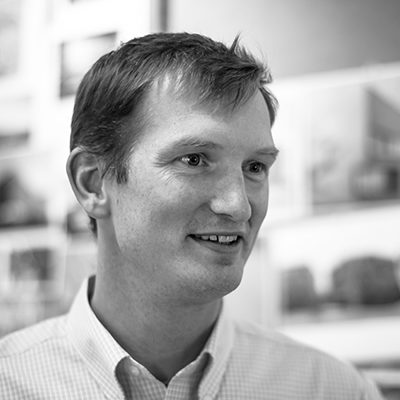Stuart Baur, Associate Principal at PAYETTE and project lead on this video project and Darcy Daniels, Wendy’s mom, share some insight into their personal perspective on the project.
Tell us about your motivation to see this project through to completion.
Darcy: I was motivated to see the project through to completion because I was there at its inception. I couldn’t imagine it going away after the content had been approved. I was so relieved when PAYETTE offered to do it. Actually, I was shocked, walking in the first day, because I thought I was going to have to pitch the project and you had really already decided to do it. It took me a few minutes to actually understand that this was going to happen.
Stuart: There was certainly an element of this project being too important NOT to happen and PAYETTE simply being in a position to do something about that. In addition to that almost ‘moral imperative’ aspect, there was a lot about the project that resonated in important ways.
MGH has been a client of PAYETTE’s for many years and is an institution and a community that we care a lot about, so the opportunity to do something special for them was certainly a component that was important to us. I think we all recognized right away that there was an aspect of the project which was about using technology to address issues of stress reduction and positive distraction – issues we’re used to dealing with through the design of the physical environment – and that was a really interesting challenge we wanted to explore. Finally, there was an element of stretching ourselves creatively that was exciting in a really interesting way. I think PAYETTE thrives in situations where we’re not quite sure we know how to do what we want to do but we have but dig in and figure it out.
What inspires you most about this project?
Darcy: So many people came together to make it happen. I still can’t believe it. So many people in PAYETTE really took a personal stake in it, wanting to make it great. On the hospital side, the Family Advisory Council really kept it in the forefront so that it wouldn’t be swept under the rug and forgotten. It was such a collaboration of effort and talent.
Stuart: Wendy and Darcy. Their generosity of spirit and determination to see this project through is nothing sort of incredible. It would have been easy for them to give up on the idea any number of times before PAYETTE ever got involved, but they didn’t. It’s a special kind of person who fights as hard as they’ve had to fight so that they can do something for the benefit of other people and I think we all feel fortunate for the opportunity to help them reach that goal.
What are you most proud of?
Darcy: I’m proud that it’s going to be something that will help kids for years. I’m proud that other hospitals are looking at it as a model for their own creations. I’m proud that it’s creating a conversation about pediatric anxiety and pain. Honestly, it’s so much bigger than I had originally intended, and yet, here it is, a snowball rolling downhill, taking on a life of its own.
Stuart: I’m certainly proud of what the finished animation looks like, as I am of the extraordinary efforts of my colleagues at PAYETTE who went above and beyond the call of duty to make it happen. More than anything though, I’m proud of PAYETTE as a company for their willingness to support this project.
What was your favorite part of working on this project?
Darcy: So many favorites. Meeting all of the great people both in the hospital and PAYETTE and tapping into this generosity of spirit that pervaded the project. Watching Wendy grow throughout the project, when we wrote the original story, she was ten, and now she’s thirteen! Knowing it was actually going to happen, having faith in the PAYETTE team, knowing they were on it, that there wouldn’t be any more disappointments. How can I thank you guys enough?
Stuart: For me it was the story-boarding process. Up to that point we were working with a collection of fairly scattered thoughts about ideas we liked and things we thought would be interesting. Creating the story-boards helped us organize those thoughts into a clear idea about exactly how Wendy would tell her story and it was the first time that I was able to imagine the animation from beginning to end.
Related:
Bringing Lines to Life
Animating Architecture
Patient View Institute Recognizes “Wendy’s Welcome to the ED”
Wendy’s Theme: Creating the Musical Score
Compositing Animation, Video and Drawings
Guest Post: Working on “Wendy’s Welcome”
Wendy’s Welcome in Healthcare Design Magazine
“Wendy’s Welcome” on the Front Lines
Zag of the Day from STAT’s On Call Newsletter


